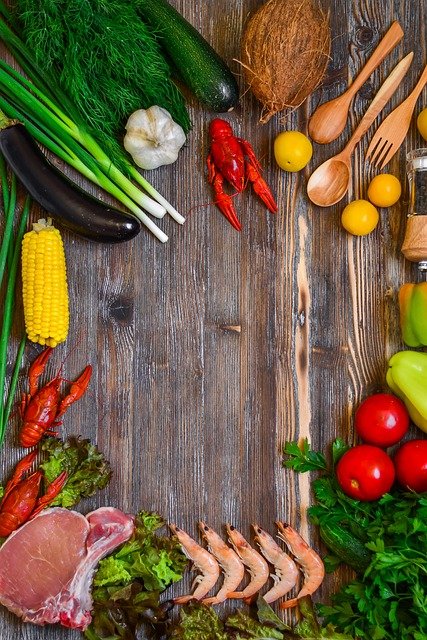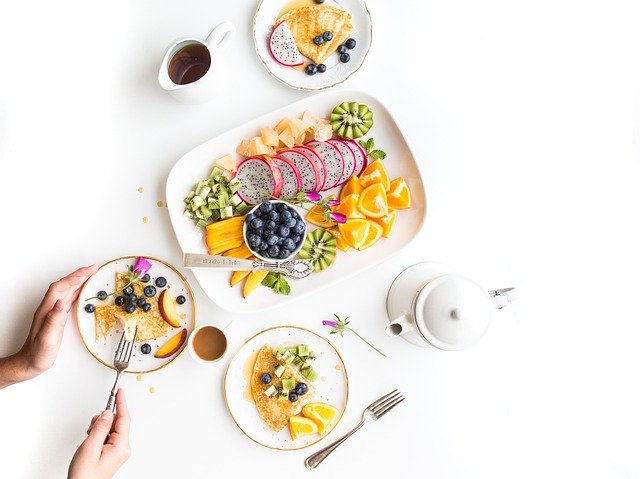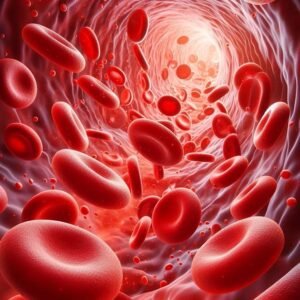
Health Benefits of Iron
- Oxygen Transport:
- Iron is essential for forming hemoglobin, the protein in red blood cells that binds to oxygen in the lungs and transports it to tissues throughout the body. This process is vital for sustaining energy levels and overall health.
- Energy Production:
- Iron plays a role in the electron transport chain, a critical component of cellular respiration that generates ATP (adenosine triphosphate), the energy currency of cells. Adequate iron levels help maintain physical performance and stamina.
- Immune Function:
- Iron supports the immune system by aiding in the proliferation and maturation of immune cells, particularly lymphocytes. This function helps the body fend off infections and diseases.
- Cognitive Function:
- Proper iron levels are crucial for neurological health. Iron deficiency can lead to cognitive impairments, including difficulties in concentration and memory, particularly in children and adolescents.
Symptoms of Iron Deficiency
- Fatigue:
- Chronic tiredness or lack of energy can be one of the earliest signs, as the body struggles to transport enough oxygen.
- Pale Skin:
- A decrease in hemoglobin levels can cause a paler complexion, noticeable especially in the face, gums, and inside the eyelids.
- Shortness of Breath:
- Individuals may experience breathlessness during normal activities or exercise due to inadequate oxygen delivery to muscles.
- Dizziness or Lightheadedness:
- A lack of oxygen to the brain can result in feelings of faintness, especially upon standing.
- Cold Hands and Feet:
- Poor circulation due to low red blood cell counts can lead to cold extremities.
- Brittle Nails:
- Iron deficiency can affect the structural integrity of nails, making them weak and prone to breakage.
- Headaches:
- Reduced oxygen flow to the brain can lead to headaches or migraines, which may be more frequent in those with iron deficiency.
Daily Iron Requirements
- Adult Men:
- Recommended dietary allowance (RDA) is about 8 mg/day.
- Adult Women:
- Due to menstrual blood loss, women require about 18 mg/day until menopause, after which the requirement drops to 8 mg.
- Pregnant Women:
- During pregnancy, iron needs increase significantly to support fetal development, necessitating about 27 mg/day.

Sources of Iron
- Animal Sources (Heme Iron):
- Heme iron is found in animal products and is more readily absorbed by the body. Good sources include:
- Red Meat: Beef, lamb, and pork.
- Poultry: Chicken and turkey, especially dark meat.
- Fish: Such as tuna, salmon, and sardines.
- Heme iron is found in animal products and is more readily absorbed by the body. Good sources include:
- Plant Sources (Non-Heme Iron):
- Non-heme iron, found in plant foods, is less easily absorbed. Good sources include:
- Legumes: Lentils, beans (black, kidney), and chickpeas.
- Tofu: A versatile source of iron for vegetarians and vegans.
- Leafy Greens: Spinach, kale, and Swiss chard.
- Nuts and Seeds: Pumpkin seeds, cashews, and almonds.
- Fortified Foods: Certain cereals, breads, and grains.
- Non-heme iron, found in plant foods, is less easily absorbed. Good sources include:
- Enhancing Absorption:
- To improve the absorption of non-heme iron, pair these foods with vitamin C-rich items. For example, add citrus fruits, bell peppers, or strawberries to a meal that contains iron.
What are the health benefits of iron?
Iron is crucial for producing hemoglobin, which carries oxygen in the blood, supports immune function, and aids in energy production.
What are the effects of iron deficiency?
Iron deficiency can lead to anemia, fatigue, weakened immune response, and cognitive impairments.
What are the daily iron requirements?
- Adult Men: About 8 mg
- Adult Women (ages 19-50): About 18 mg
- Pregnant Women: About 27 mg
What are good dietary sources of iron?
- Heme Iron (animal sources): Red meat, poultry, fish
- Non-Heme Iron (plant sources): Beans, lentils, tofu, spinach, fortified cereals, nuts, and seeds
How can one enhance iron absorption?
Vitamin C-rich foods (like citrus fruits and bell peppers) can enhance the absorption of non-heme iron when consumed together.
What are the symptoms of iron overload?
Excess iron can lead to symptoms like joint pain, fatigue, and more serious conditions like liver damage.
4o mini







